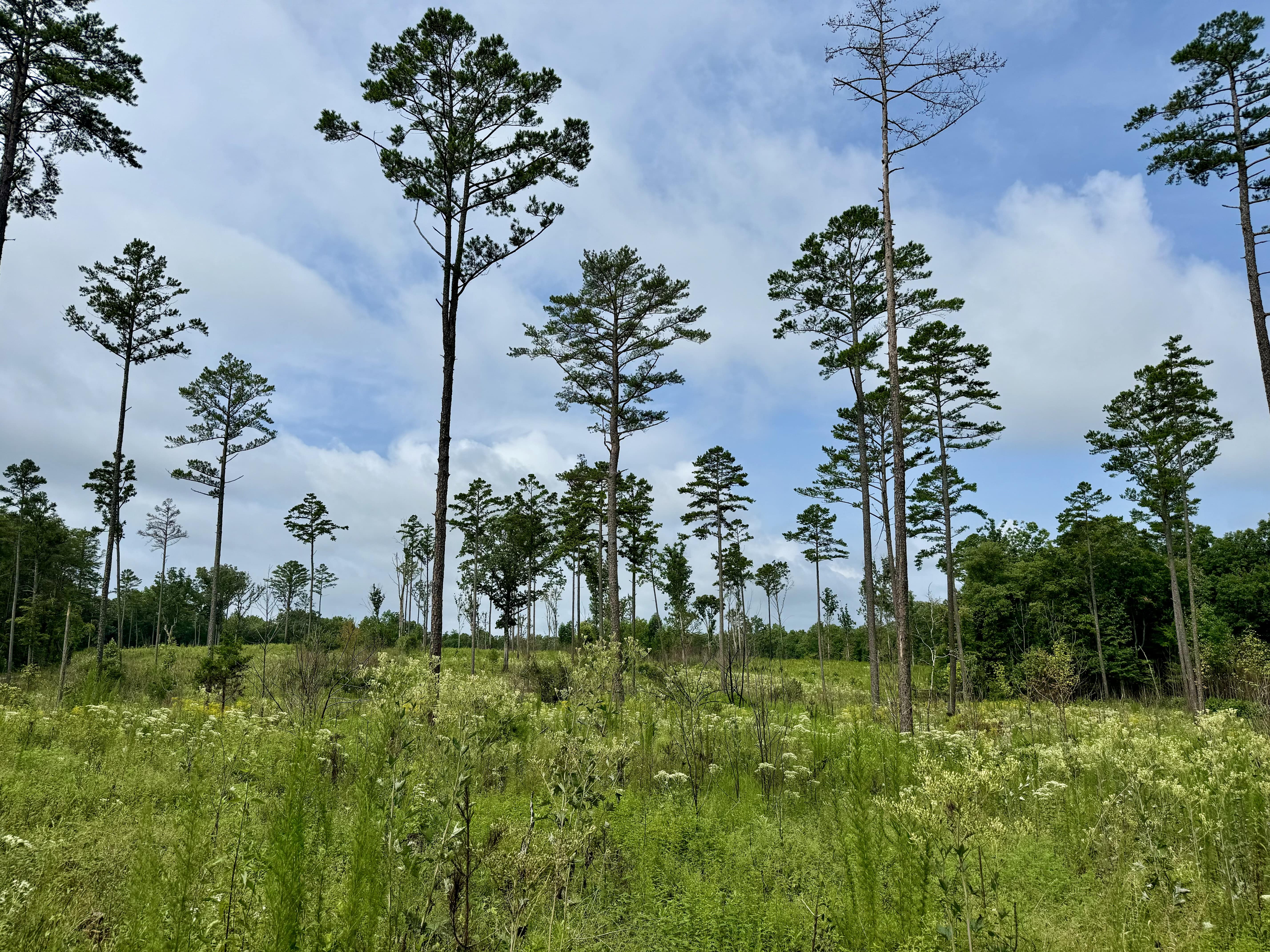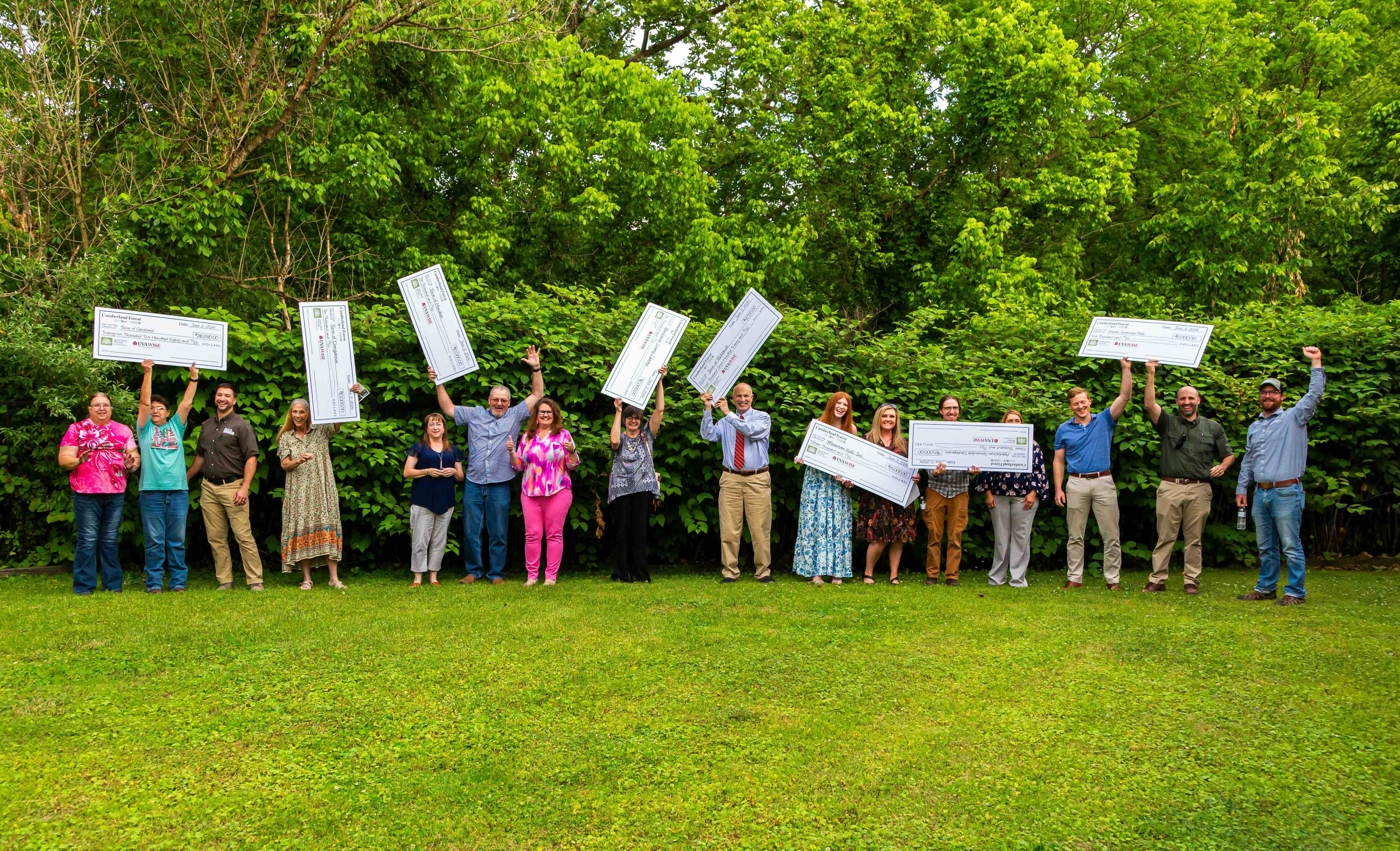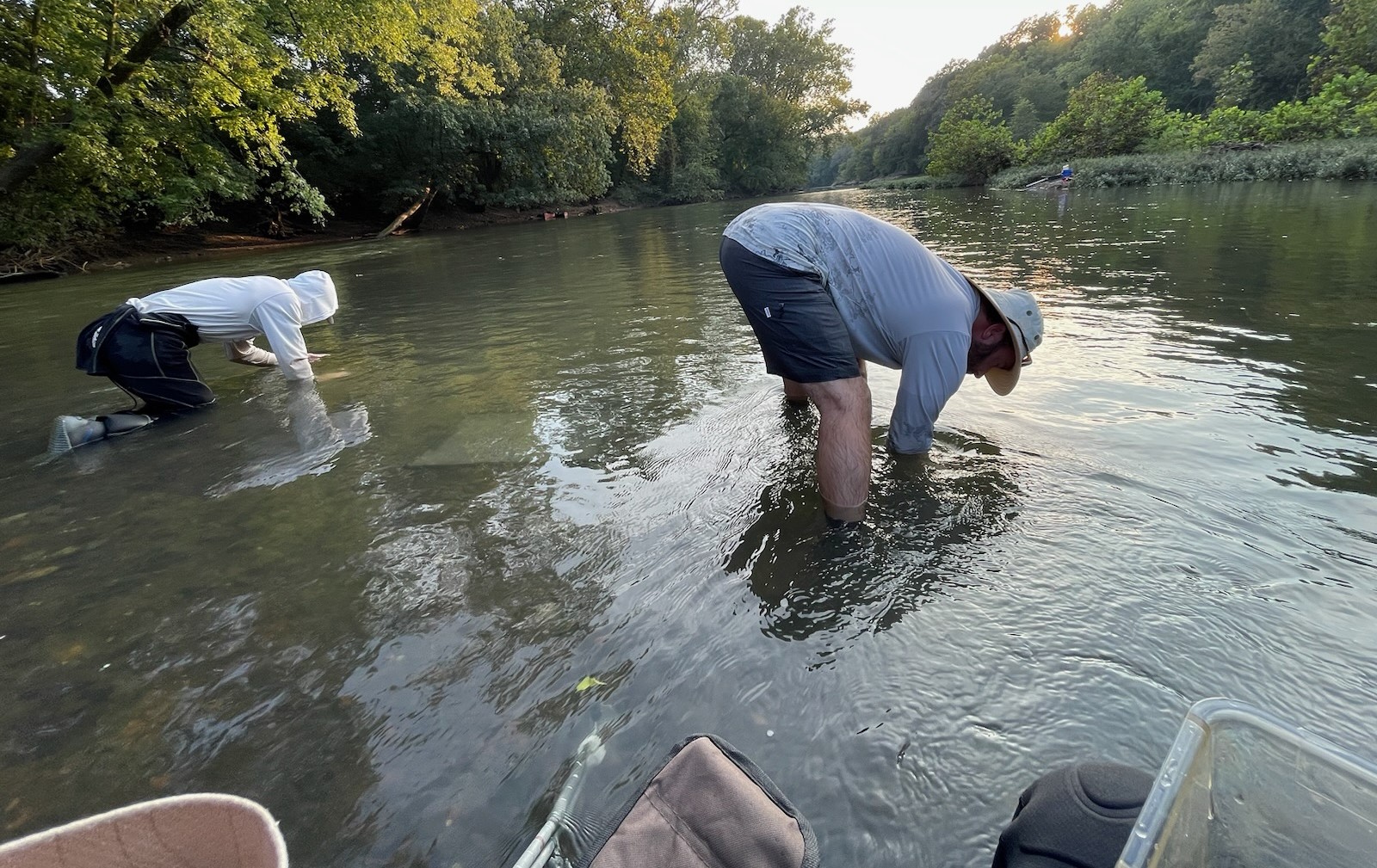
Board Notes from Christy Smith
As nature lovers, we already know what’s special about Tennessee. From native forests and grasslands to unrivaled aquatic habitat and more caves than anywhere in the United States, Tennessee earns its distinction as our nation’s most biodiverse inland state.
Tennessee’s natural environment is also significant at a global scale. East Tennessee's Appalachian Mountains are part of a connected landscape that runs from Alabama to Maine. This natural corridor supports an incredible diversity of plants and animals, stores and filters clean water, and sequesters carbon at a scale not found in other parts of the world. This part of Tennessee also includes the Great Smoky Mountains, which is the most visited national park in the United States.
Tennessee is also one of 31 states included in the vast Mississippi River watershed, which comprises 41% of the continental United States and serves as our nation’s primary way of transporting agricultural goods from the American Midwest to international markets. In addition to fueling local, state and national economies, the Mighty Mississippi serves as a critically important corridor for more than 325 migratory bird species, dozens of fish species and pollinators such as the monarch butterfly.
With this in mind, our work in Tennessee has never been more important. As The Nature Conservancy pursues its ambitious 2030 goals, now five years away, we are doing our part in addressing the negative effects of climate change and widespread loss of critical plant and animal species.
This report highlights what we accomplished together in 2024. We couldn’t do any of this, and much more, without your support. Thank you for choosing to prioritize Tennessee nature.
By The Numbers
-
28,262
bats emerged from Piper cave, marking the highest number recorded in over 14 years
-
24,456
acres of oak and pine woodlands, and native grasslands, restored by TNC’s Tennessee/ Kentucky Fire Team and eight partners
-
38+
miles of stream to be reconnected after removing the last remaining dam along Citico Creek

LAND
Burns advance shortleaf pine restoration at Chestnut Mountain.
Back in 2019, not long after assuming ownership of the Bridgestone Nature Reserve at Chestnut Mountain, our Nature Conservancy staff gathered with partners to plant 75,000 shortleaf pine seedlings in a portion of the 5,763-acre property. Before the planting, TNC’s Fire Team carefully treated the 200-acre restoration site with low intensity, controlled burning, a natural disturbance that is necessary for preventing encroachment by hardwood tree species and making way for native grasses and wildflowers that characterize the open woodland habitat once common throughout the region.
In 2024, TNC staff and partners returned to deliver fire to the area for the first time since 2019 Repeating a burn helps maintain this fire-dependent forest, which also includes warm season grasses, forbs and wildflowers. Next, TNC will closely monitor the restoration site for signs of native flora and fauna that include bluestem (Schizachyrium scoparium) and Indian (Sorghastrum nutans) grasses, yellow-fringed orchid (Platanthera ciliaris), rosepink (Sabatia angularis) and bobwhite quail (Colinus virginianus).
-
In 2021, The Nature Conservancy extended its land conservation efforts to Piper Cave, where staff spent nearly two years cleaning debris from the former saltpeter mine-turned-personal-bunker to welcome back federally-undangered gray bats. Now restored to a more natural state, this subterranean space should support gray and other hibernating bats during winter and maternity colonies during summer.
In addition to rewilding the interior of the cave, in 2024 TNC restored natural entrances previously walled off to accommodate two decades of human activity. With help from members of the caving community and partners from the Tennessee Wildlife Resources Agency, the Tennessee Valley Authority and the U.S. Fish and Wildlife Service, TNC also built gates at two cave entrances to welcome bats and deter trespassers. All of the hard work paid off in May when just two years since acquiring, restoring and gating Piper Cave, our staff recorded the highest numbers of bats—28,262—using the site to date, including a growing population of gray bats.
-
In addition to securing and restoring land at our own nature preserves, The Nature Conservancy helped partners do the same. In August, this included celebrating the opening of the new Middle Fork Bottoms State Park. Located along the Middle Fork of the Forked Deer River in Madison County, this new addition to Tennessee’s system of state parks culminated after an almost a decade-long effort by TNC, the West Tennessee River Basin Authority and the Tennessee Wildlife Resources Agency to restore wetland habitat on this property to benefit plants and animals, and outdoor enthusiasts.
TNC also convened with the Tennessee Department of Environment and Conservation, the Tennessee Department of Agriculture’s Division of Forestry and the Tennessee Wildlife Resources Agency at our Bridgestone Nature Reserve at Chestnut Mountain. The purpose of this gathering was to discuss opportunities for ongoing collaboration around a forthcoming adjacent state park – Scott’s Gulf Wilderness.
TNC looks forward to working together in and around both new public lands to benefit nature and provide positive outdoor experiences for Tennesseans.
WATER
Science helps to balance water demands and conservation needs on the Duck River.
In 2024, American Rivers listed the Duck River among the “Most Endangered” in our nation. That is not the type of distinction anyone wants for what is considered one of the most biodiverse rivers in North America, one boasting 60 species of mssels—19 which are listed as federally threatened or endangered—as well as fish, snails, insects and other species.
With support from Ascend Federal Credit Union, TNC has partnered with Tennessee Tech University on a set of research projects that provide a foundational understanding of how future droughts and water withdrawals might impact aquatic ecosystems. In addition to building on TNC’s conservation efforts in this river since 1999, these projects will inform collaborative water supply planning and conservation efforts with key stakeholders in the Duck River Basin.
Quote: Rob Bullard
With demands for the Duck’s water outpacing what it can sustainably provide, The Nature Conservancy is helping develop the science that shows how we can balance the needs of species with growing communities, agriculture, recreation and other competing demands.
Partnership In Action
-
Together with the U.S. Forest Service and USDA Natural Resources Conservation Service in Southern Appalachia, particularly at the Cherokee National Forest’s Citico Creek, TNC stepped up efforts to remove seven undersized or outdated culverts and other barriers to the natural flow of water required by 67 fish and mussel species, including the federally endangered smoky madtom (Noturus baileyi), Citico darter (Etheostoma sitikuense) and federally threatened yellowfin madtom (Noturus flavipinnis). TNC also collaborated on improving a stream crossing and bridge over Little Citico Creek for people visiting the wilderness area for hiking, fishing, and backcountry camping. Additionally, the partners completed the design for removing Citico Creek’s last remaining dam to reconnect over 38 miles of stream and better mimic its natural flow.
-
TNC advanced its groundbreaking partnership with the U.S. Army Corps of Engineers (USACE) by gathering with partner agencies and organizations for a two-day workshop organized around using locks and dams on the Cumberland River to improve conditions for fish and wildlife. This effort represents one of many pursued as part of this formal partnership between TNC and USACE that focuses on modernizing this national system of water control projects to improve and enhance social, economic and environmental benefits. As the largest water manager in the United States, the USACE oversees a national infrastructure that influences more than 52,000 miles of rivers. So far, they have enrolled about 25 percent of their portfolio in the SRP.
-
CFI specializes in propagating and releasing rare aquatic species back into restored rivers and streams throughout the southeastern United States. Thanks to support from the Bonneville Environmental Foundation, TNC partnered with CFI on propagation of marbled darters (Etheostoma marmorpinnum) from the Little River in East Tennessee. Additionally, members of TNC’s Tennessee and Appalachians teams visited CFI’s Knoxville facility to explore other opportunities for working together across this globally important landscape.

CLIMATE
The Cumberland Forest Community Fund and the Doe Mountain partnership help advance climate goals.
Cumberland Forest Community Fund
The Nature Conservancy’s 253,000-acre Cumberland Forest—located in a Central Appalachians landscape spanning Tennessee, Kentucky and Virginia—represents a project unlike any other pursued in the region. An investment fund assembled by TNC retains ownership of the property, which TNC manages. Other entities have owned the coal, oil and gas reserves located beneath the surface for many decades. The mineral estate owners pay extraction revenues, also known as royalties, to the surface landowner according to local, state and federal laws. Ever since striking this deal in 2019, TNC has reinvested the mineral royalties into economic development and conservation projects in local communities within the Cumberland Forest Project geography.
To date in Tennessee, the Cumberland Forest Community Fund has awarded five grants to local communities. In 2024, that included awarding $106,000 to the Clinch-Powell Resource Conservation and Development Council for community-based projects such as creating outdoor access to sustainable adventuring in the Cumberland Gap, updating outdoor recreation facilities for youth in Clairfield, developing public trails and outdoor spaces in the Clearfork Valley, cleaning up litter at public spaces in Campbell County and building a history-themed community walking trail in Rutledge.
Partnership In Action: Doe Mountain Recreation Area
In 2012, The Nature Conservancy teamed up with the State of Tennessee and Johnson County to acquire what is now the Doe Mountain Recreation Area (DMRA). At the time, the 8,600-acre property was one of the largest remaining privately owned blocks of forest in Tennessee’s Southern Appalachian region. Since then, TNC has collaborated with various organizations to conserve the mountain’s native habitats through a forest carbon storage program and to boost economic development by supporting outdoor recreation and tourism. In 2024, three actions advanced these goals:
- The Tennessee Department of Environment and Conservation’s new Office of Outdoor Recreation awarded a $392,000 grant to DMRA for trail development and signage.
- The DMRA released an Economic Impact Analysis that highlighted a $1 million annual economic output, support for 17 local jobs and visits from outdoor enthusiasts traveling from 30 states.
- Dr. Jon Davenport, Assistant Professor of Biology at Appalachian State University, brought undergraduate students to conduct wildlife surveys and learn field biology techniques at DMRA. Some findings included documenting nine species of salamander, including the rare Yonahlossee salamander (Plethodon yonahlossee), as well as a variety of mammals like spotted skunk (Spilogale putorius) and long-tailed weasel (Neogale frenata).
-

Mining the Sun
A new report featuring TNC’s Cumberland Forest Project highlights how mine lands and brownfields can supply a significant amount of clean energy to power homes across the U.S. Check It Out
Policy Corner
-

Creating a Conservation Legacy for Tennessee
In an open letter published in 2024, The Nature Conservancy’s Tennessee State Director, Laurel Creech, thanked Governor Lee and the Tennessee Legislature for approving $71.5 million through the Tennessee Heritage Conservation Trust Fund. Read More
DOWNLOAD

BIODIVERSITY
Tennessee’s State Wildlife Action Plan provides a blueprint for conserving wildlife.
In the spirit of “keeping common species common,” The Nature Conservancy is again partnering with the Tennessee Wildlife Resources Agency to complete a ten-year, comprehensive revision to Tennessee’s State Wildlife Action Plan (SWAP). The SWAP focuses on the state’s species of greatest conservation need (SGCN) and habitats critical to their survival, guiding strategies to preserve Tennessee’s rich natural heritage.
Since the 2015 Tennessee SWAP, 175 rare and/or declining species—81 animals and 94 plants—have been added to the SGCN list in Tennessee. From the obscure three-toothed snail (Triodopsis platysayoides) to the better-known eastern screech-owl (Megascops asio) and American bumblebee (Bombus pensylvanicus), numerous wildlife species face unprecedented threats and population decline. Other highlights of the 2025 revision process include:
- Formation of a SWAP Steering Committee, comprised of conservation partners from across the state, to form shared strategies around implementing and monitoring long-term outcomes of the 2025 SWAP.
- Addition of a Private Lands chapter that engages landowners seeking to create and/or improve environmental conservation practices on their property.
- Inclusion of Regional Conservation Opportunity Areas that highlight priority habitats located along Tennessee’s border and in neighboring states to guide increased collaboration.
Tennessee’s revised SWAP will be released for public comment in Spring 2025 and a final version will be published in Fall of 2025.
Every summer for more than 20 years, Nashville has become ground zero for a remarkable natural spectacle: the gathering of purple martins (Progne subis) during their annual migration. Each year, these federally protected birds form a large night roost in or near downtown Nashville before embarking on their long journey to South America for the winter. In 2024, The Nature Conservancy celebrated this exciting event by joining Bird Safe Nashville, Friends of Warner Parks, the Nashville Zoo and others in marking one year since Nashville officially become an Urban Bird Treaty City. During the initiative’s inaugural year, TNC teamed up with over 50 partners to conserve key bird habitats around the city and find ways to educate residents and visitors about the importance of bird conservation. It also established an online presence with an official webpage (www.nashvilleurbanbirdcity.org) and Instagram handle (@nashvilleurbanbird) in an effort to reach an even broader audience!
Download the Report
-

2024 Year in Review
A look at highlights and conservation successes across Tennessee during 2024.
DOWNLOAD



